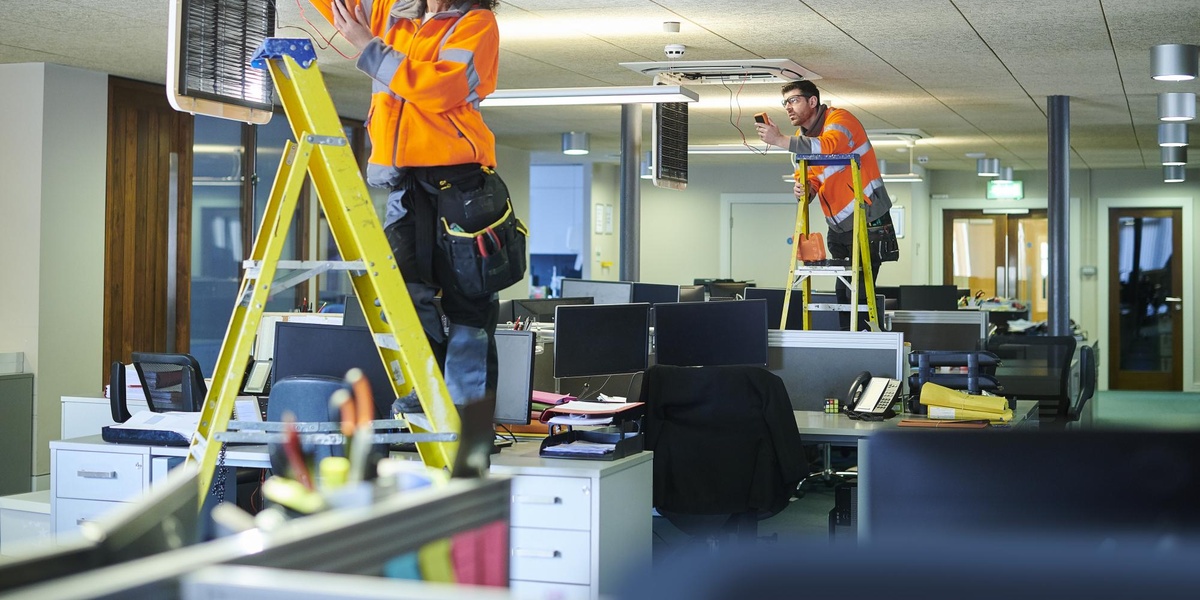Note: This article is not intended to prevent, diagnose, treat or cure COVID-19, the disease caused by the SARS-COV-2 virus. In this post, Picarro is not making any claim regarding any specific manufacturer’s effectiveness, nor is Picarro making claims on the efficacy of hydrogen peroxide in reducing the transmission of SARS-COV-2.
The 2020 worldwide spread of COVID-19 (the disease caused by SARS-COV-2) highlights the shortcomings in our ability to preserve public health when a virus becomes airborne. While the latest pandemic seems to not be as deadly on an individual level as SARS in 2003 and MERS in 2012, it has proven far more deadly globally because it is so highly contagious. Respiratory droplets from those infected, often from people who are asymptomatic, are a common vector for transmission. In performing contact tracing, some epidemiologists have theorized that brief exposure to the virus is not typically enough for infection, and suspect that a critical load of viral particles may be circulated by the HVAC system of commercial buildings.
As a result of these discoveries, we have shut down many of our indoor meeting spaces, and by extension, the economy. As winter arrives and we move life indoors, how do we keep our public spaces, from shopping malls to airports, courthouses to public schools, restaurants to movie theatres, safe for use? And how do we prepare for the next pandemic?
There are various methods for sterilizing air when it returns through an HVAC system for recirculation, including exposing it to ultra-violet (UV) light or using ionization to generate gases such as ozone (O3) or hydrogen peroxide (H2O2). UV is often preferred because it adds no additional gases to the air. Ozone operates by peeling away electrons from cell walls as its three-oxygen atom structure breaks down, destroying a cell’s DNA. Hydrogen peroxide is similar in structure to water (H2O) and can attach to cell walls and oxidize them. However, the United States Food and Drug Administration warns that these same actions can also cause the cells lining the lungs to become inflamed. The United States Environmental Protection Agency does not recommend any ozone generators for indoor air, and even states that the irritation caused by ozone can make a person more susceptible to respiratory infection.
Many manufacturers have introduced hydrogen peroxide generators as a solution. While hydrogen peroxide has a long history as a pharmaceutical sterilizer at high concentrations, these manufacturers posit that extremely low levels of hydrogen peroxide throughout a building (10-20ppb or 0.01ppm) will attract and kill viral particles while not impacting human health. These generators are sold both as stand-alone units and for integration into duct work by a variety of manufacturers.
When deciding to incorporate hydrogen peroxide generators into a facility, health and safety officers must consider several things. First and foremost, is H2O2 actually being generated? Second, does the generated hydrogen peroxide fully distribute throughout the facility and stay at proper levels for disinfection?
At concentrations of 10-20ppb or 0.01ppm, hydrogen peroxide can neither be seen nor smelled, and conventional electrochemical sensors for health and safety cannot detect it. The OSHA limit for H2O2 is 1ppm over 8 hours, and even the best sensors cannot measure below 0.1ppm. The ionization process purported to be producing H2O2 may also react to produce undesired byproducts including ozone (O3) or even formaldehyde (H2CO), a known carcinogen. Both may disinfect the air and slow viral and bacterial growth on surfaces but could also harm human health at high enough levels. A proper evaluation of a solution requires measuring hydrogen peroxide directly, not just evaluating microbial growth that can be a side effect of undesirable byproducts of ionization.
Measuring below 100ppb or 0.1ppm of H2O2 has typically required complex instrumentation that relies on bottles of chemicals to act as reagents and requires advanced training to operate. Certainly, these laboratory-grade pieces of instrumentation may be used to evaluate a device under development but would be challenging to deploy throughout a facility long term.
Once a public space is equipped with these generators, the H2O2 must be monitored long term to make sure a high enough level for claimed disinfection is maintained, but it is still low enough to be safe for human respiration.
Picarro’s CRDS gas analysis technology has been meeting the exacting needs of the pharmaceutical industry for over a decade, and today can be easily used by anyone to both detect whether hydrogen peroxide is actually being generated, and also to monitor levels in your facility after you’ve installed the generator. The Picarro G2114 hydrogen peroxide analyzer (now discontinued) can be rolled on a cart from room to room, or installed in a central monitoring station and paired with a manifold to monitor hydrogen peroxide levels in different rooms throughout a facility. The instrument requires no maintenance or consumables and can be set up in minutes to measure hydrogen peroxide concentration as low as 3.3ppb. Calibration is easy because, instead of using hydrogen peroxide standards, an operator can use methane standards for surrogate gas validation which are readily available.
Purchasers of hydrogen peroxide systems should request real laboratory test data from manufacturers. Building safety officers should consider acquiring their own Picarro gas analyzer to ensure that the investment they have made in hydrogen peroxide generators is properly installed and continues to generate a constant level of hydrogen peroxide in all habitable spaces.
By Joel Avrunin, VP of Sales and Marketing for Picarro Inc., a leading provider of solutions to measure greenhouse gas (GHG) concentrations, trace gases and stable isotopes. www.picarro.com
